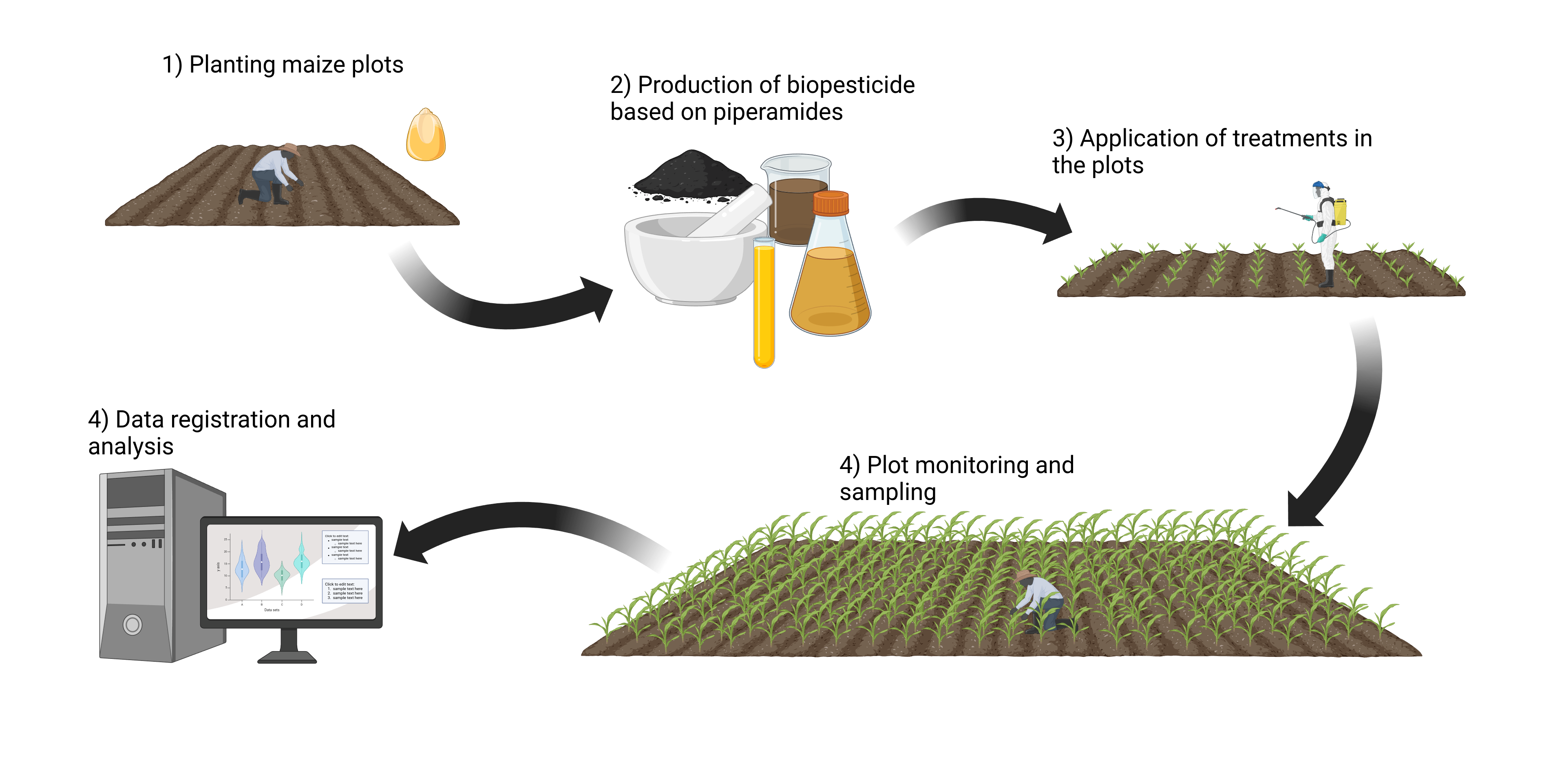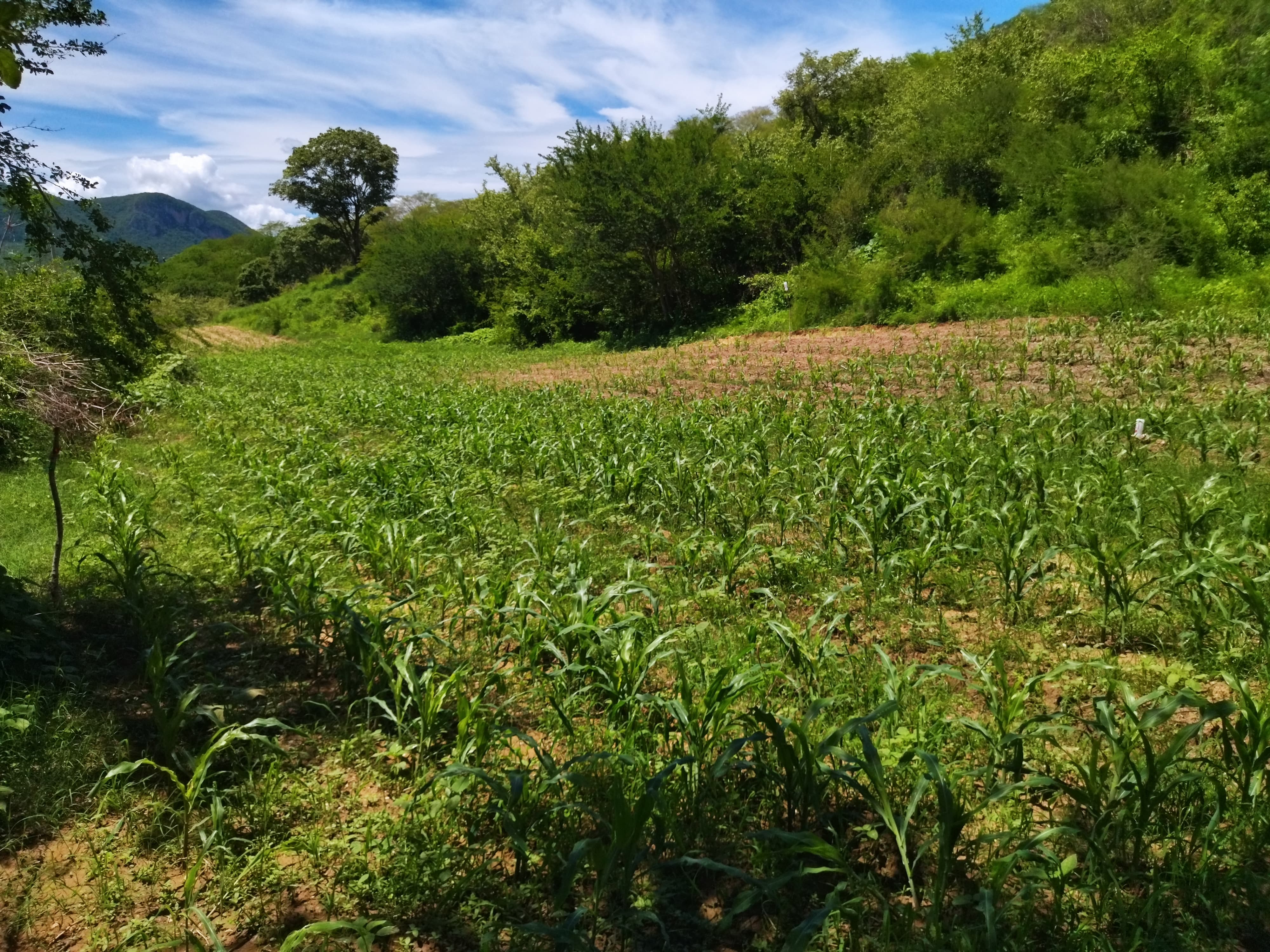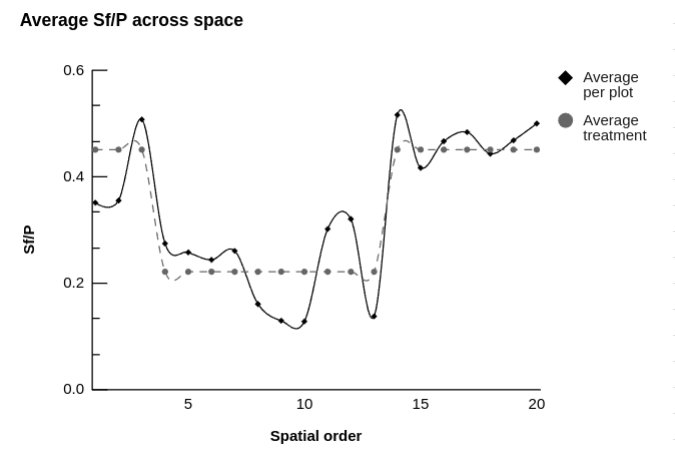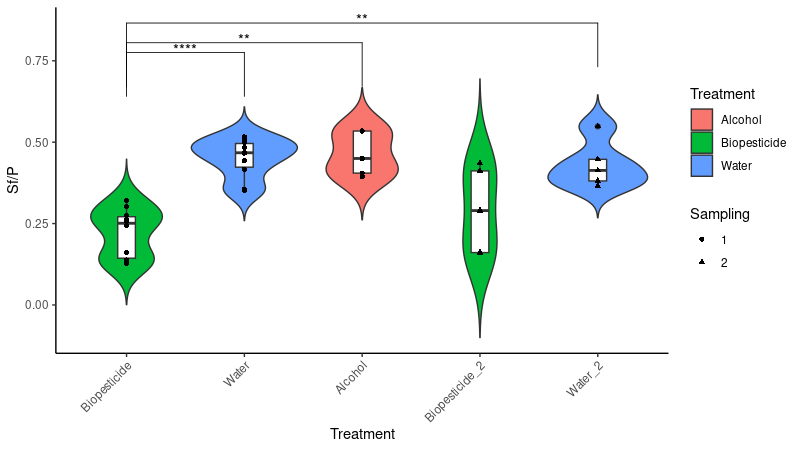Field Test
Introduction
Piperamides have previously demonstrated a pesticidal effect on the fall armyworm, Spodoptera frugiperda (Sf), as well as other Lepidopteran species that inflict damage on corn crops. Although the precise mechanism of action of piperamides remains to be fully elucidated, it is posited that their efficacy is linked to the inhibition of the enzyme trehalase in these insects, potentially disrupting trehalose metabolism and chitin biosynthesis.
To date, the effectiveness of piperamides has been assessed solely under laboratory conditions, leaving their impact on Spodoptera frugiperda in real crop environments unexamined. In pursuit of developing a sustainable and environmentally friendly biopesticide, in contrast to conventional pesticides utilized in Mexico, we conducted a field trial with a piperamide-based biopesticide. This trial was executed in a corn field situated in the community of Cosalá, Sinaloa, Mexico, which was cultivated using traditional agricultural practices of the region.
This is a very important step in the development of the project since it will provide invaluable data needed for the optimization and design, such as the appropriate concentration, effectiveness, delivery, etc., in a field context. For this activity, we did not use any synthetic biology, GMO, or its products; instead, the piperamides were directly extracted from black pepper (Piper nigrum) fruits.
The development of these tests was performed with the advice and support of specialized people that formed part of the CLIMATON, UNAM. This is a competition where university students present their projects related to SDGs (Sustainable Development Goals). There we received personalized advice from experts in the area related to our project, who helped us develop the project and guided us in the process.
The competition was organized by institutions including the Universidad Nacional Autónoma de México (UNAM), the University Coordination for Sustainability (COUS), the Climate Change Research Program (PINCC), the Climate Change University Network (REDUCC), and the United Nations International Children's Emergency Fund (UNICEF).

Cultivation and Planting Techniques
The crop field utilized is situated at coordinates 24°28'29"N, 106°42'37"W. This location was chosen because, at the time of the experiment, there were no other corn fields within a radius exceeding 1 km, and the land had not been cultivated for corn for a minimum of two years. Planting was conducted using the traditional method of the Cosalá community in Sinaloa, which involves manually placing 2 or 3 seeds at each site, using the foot as a reference for spacing between planting locations.
The corn variety employed was San Juan, a local cultivar sourced from a farmer in the region from his own harvests. A total area of 2700 m² was planted, of which 300 m² was designated for the experiment. This area was divided into 30 units of comparable size, referred to as plots, with their spatial organization detailed next.


Piperamide Extraction
The following steps were followed for the extraction of piperamides from the black pepper fruit, and this pepper extract was used for the biopesticide treatment of the plots.
- Grind 100 grams of black pepper in a mortar or blender.
- Mix 100 grams of ground black pepper with 0.5 L of isopropanol/ethanol in a maceration container.
- Place the container in a water bath for 1 hour and let it cool to room temperature.
- Let the mixture marinate for at least 1 day, preferably 3.
- Filter the liquid and discard the residual plant material.
- Place in a water bath until the volume is reduced to 250 ml.
- Add 50 ml of isopropanol, then add KOH while stirring and heating until dissolved.
- Mix the piperamide extract with the KOH solution and stir for 1 hour.
- Filter the liquid using cotton over a 1L container.
- Add 1150 ml of distilled water to the filtered liquid slowly and place it in the refrigerator for 1 to 3 days.
- Filter the mixture using a cellulose filter (vacuum recommended).
- Once dry, collect the paste and dissolve it in isopropanol/ethanol to form crystals.
Application of Treatments
The treatments were administered on the same day, with a time interval of less than one hour between applications. The temperature was recorded at 28°C, humidity levels were approximately 80%, and wind speed was around 4 km per hour. Treatments were applied using a manual sprayer (Lion Tools 500 Ml Sprinkler 1885), with 1 to 3 sprays per plant depending on its size, ensuring coverage of the adaxial surface of the leaves, particularly in areas near the meristems. A total of 1 liter was utilized for every 10 plots.
Sampling of Spodoptera frugiperda and Zea mays
The total count of Spodoptera frugiperda and Zea mays individuals was documented for each individual plot. Sampling of larval and adult Spodoptera frugiperda was conducted by inspecting the leaves and stems of each corn plant, with particular attention to the leaf sheaths. Additionally, a lamp was used to illuminate hard-to-see areas of the stem. Corn plants were counted by direct enumeration, and the total number was recorded for each plot.
Alongside the sampling of Spodoptera frugiperda, the presence of other arthropods was monitored and documented in both the soil and the plants within the plots, as well as in the surrounding areas of the crop field.

Assessment of Environmental Parameters
Air temperature and humidity were measured by positioning a temperature and humidity sensor (Steren brand, SHOME-180 model) 10 cm above ground level at the central point of each plot for a duration of 10 minutes. The data were then analyzed to determine if there were significant differences in temperature and/or humidity among the plots.
| Plot | Temperature (°C) | Humidity (%) |
|---|---|---|
| Plot 1 | 28.3 | 78 |
| Plot 2 | 28.5 | 80 |

Statistical Evaluation
Statistical analysis was conducted utilizing 25 experimental units (plots 1 to 25), comprising 10 replicates for the biopesticide treatment, 10 for control B, and 5 for control C. The averages of Spodoptera frugiperda individuals, Zea mays plants, and Spodoptera frugiperda individuals per plant (Sf/P) in each plot were calculated.
Subsequently, Shapiro-Wilk normality tests were performed on the data collected from the plots during the two sampling periods. Upon confirming the normality of the data, a linear regression analysis was executed to assess the relationship between the number of Spodoptera frugiperda individuals and the corn plants in the plots subjected to treatments A and B.
Finally, three homoscedastic unpaired T-Student tests were conducted, utilizing the averages of Sf/P per plant from the plots under treatments A, B, and C in the samples, yielding the p-value for the two tails.


In the next plot, we see the differences in the number of individuals of Spodoptera frugiperda per plant across the different treatments. The first sampling of the biopesticide treatment is significantly different from the controls in the first sampling (p<0.005) and the water control in the second sampling (p<0.01). This indicates that the presence of the plague is less in the treatment group than in any of the controls, showing a reduction of around 50% of the fall armyworm in the plots treated with the biopesticide.
Discussion
The graph illustrating the average Sf/P as a function of the spatial distribution of the plots was created to visually and intuitively convey the results regarding the impact of the biopesticide on the fall armyworm population. It is evident that this index is lower in the central area (plots 4-13), where the biopesticide was applied, compared to the peripheral areas (1-3 and 14-20), which received a control treatment B (water).
The potential for contamination by insecticides from adjacent crop fields affecting the results was eliminated, as these fields were situated more than 1,000 meters away. According to the findings of Wittich and Siebers (2002), this distance is sufficient to prevent contamination from certain insecticides. Furthermore, in the community where the study was conducted, aerial vehicles are not employed for the application of agrochemicals, which further diminishes the likelihood of such contamination impacting the results.
The temperature and humidity records in the plots did not exhibit significant differences, leading to the exclusion of these factors as potential influences on the observed variability. The linear regression analysis indicated that the number of plants per plot does not significantly affect the coefficient of the independent variable at a significance level of ɑ = 0.05, in both the biopesticide-treated and control B plots. However, the intersection with the Y-axis demonstrated significant differences between the biopesticide-treated and control B plots. Consequently, it can be concluded that the number of plants per plot does not have a significant impact on the Sf/P index, implying that this factor is not a critical source of the observed variability in the Sf/P index among the biopesticide-treated, control B, and C plots.
Once alternative sources of variability were eliminated, the impact of the biopesticide on the average Sf/P was validated through T-Student tests. These tests revealed a significant difference in the average Sf/P between the plots treated with the biopesticide and controls B and C, with a p-value of less than 0.0001 in the first sample. In contrast, the difference between controls B and C was not significant at ɑ = 0.05. The same test applied to the results of the second sampling indicated that the differences were not significant between the biopesticide-treated plots and control B (data for control C was unavailable during the second sampling). Consequently, the null hypothesis asserting that the biopesticide had no significant effect on the average Sf/P in the first sampling, but not in the second, is rejected (pending further analysis). However, in this latter sampling, the average Sf/P across all plots remained lower compared to the control, suggesting an increase in variability. This variability may be attributed to several factors, including differences in environmental conditions, application techniques, or the inherent characteristics of the biopesticide.
These findings indicate that the composition and application method of the biopesticide were effective in reducing the fall armyworm population three days post-application, given the local climatic conditions and cultivation methods. Nevertheless, this effectiveness appears to diminish after six days, potentially due to factors such as compound degradation, leaching from rainfall, and other environmental influences.
References
- NileRed. (2017, May 6). Extracting the spicy chemical in black pepper [Video]. YouTube. Retrieved September 3, 2024, fromhttps://www.youtube.com/watch?v=YGZddY3R1pU
- Nelson, D. L., Lehninger, A. L., & Cox, M. M. (2008). Lehninger Principles of Biochemistry. Macmillan.
- Tavares, W. S., Cruz, I., Petacci, F., Freitas, S. S., Serrão, J. E., & Zanuncio, J. C. (2011). Insecticide activity of piperine: Toxicity to eggs of Spodoptera frugiperda (Lepidoptera: Noctuidae) and Diatraea saccharalis (Lepidoptera: Pyralidae) and phytotoxicity on several vegetables. Journal of Medicinal Plants Research, 5(21), 5301-5306.
- Tang, B., Hu, S., Luo, Y., Shi, D., Liu, X., Zhong, F., & Wu, Y. (2024). Impact of three thiazolidinone compounds with piperine skeletons on trehalase activity and development of Spodoptera frugiperda larvae. Journal of Agricultural and Food Chemistry, 72(15), 8423-8433.
- Wittich, K. P., & Siebers, J. (2002). Aerial short-range dispersion of volatilized pesticides from an area source. International Journal of Biometeorology, 46, 126-135.